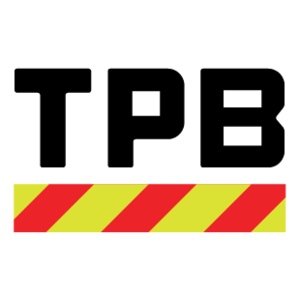Traffic Control: Increasing Your ROI
THE SOUNDS OF DEPRECIATION
As a road construction company owner, you understand we all have the same pain points. Things that make us cringe. Things that accelerate the depreciation of our equipment. For example, every time we hear traffic control equipment crash-land in the truck bed!
BEGINNING OF A SHIFT
It’s early morning, and you’re with your Traffic Control teams. Everyone is happy, and getting ready for the day. They start by hastily loading the back of the pick-up trucks. The first thing they toss on the truck is 50 traffic cones. Next, the team tosses 10 sign stands onto the truck. Finally, 10 of your 48”x48” vinyl roll-up signs are tossed onto the truck. Your traffic control team, being diligent, wants to ensure the signs don’t bounce out as they ride to the job site…they weigh the signs down by wedging them between the cones and sign stands.
This all may sound good. However, sign stands have sharp edges and pointy corners. These corners and edges can make quick work of the vinyl signs and traffic cones. Speaking of traffic cones, as their positions shift during transport to the job, the cones can land on the stands. Thus, causing the legs of the stands to become entangled or even permanently damaged under the weight of the cones. Worse yet, the sheer weight of the traffic cones falling onto signs can cause tears, broken fiberglass ribs, and even reduce reflectivity!
THE COST OF TEMPORARY TRAFFIC CONTROL EQUIPMENT
As the company owner, you’re happy to invest in your crews. Buying new stands, cones and signs when needed. Knowing that your crew will take care of the company assets the best they can, given what they have to work with. You figure, your traffic control equipment… signs, stands, and cones should last a minimum of two years in very good condition.
There’s two main reasons why this is so important.
Reason 1: the sheer cost of signs, stands and cones. The average costs of traffic control equipment:
48”x48” roll-up sign costs on average $150.00 each.
60”x60” roll-up signs costs on average $267.00 each.
Sign stands for roll-up signs cost on average $110.00 each
Traffic cones with 4” and 6” retro reflective collars attached are not strikingly high in cost for one, but there aren’t any jobs that require only 1 traffic cones:
28” cone with a 6” and a 4” reflective collar on average costs $16.50 each.
36” cone with a 6” and a 4” reflective collar on average costs $19.75 each.
As we know, the number of cones used to set a work zone is dependent upon the length of the work zone.
Reason two: In each federal, state, and local contract with a Maintenance of Traffic clause, will read ‘traffic signs, traffic cones, and traffic stands will be new or in like new condition.’ Keeping our traffic control equipment in like new condition means a much higher return on investment.
END OF SHIFT
When your crews come back to the office/warehouse, you notice the pick-up trucks look a lot more chaotic than when they left.
You realize two things. First: Though your crews are doing their best, the traffic control equipment is not being cared for. Second: You know that the condition of the equipment and eventual chaos in your truck bed hinders the efficiency of your crews and ultimately increases the exposure of your crew to traffic!
You know there has to be a way to increase your ROI and increase the safety of your Traffic Control crews!
THE BEST OF BOTH WORLDS: INCREASED RETURN ON INVESTMENTS, AND INCREASED SAFETY OF YOUR TRAFFIC CONTROL CREWS.
You may be asking yourself: Is there a method (a system) to increase the organization of the traffic control equipment on the truck beds? How can I protect my equipment from unnecessary wear and tear? How can I increase the efficiency (and safety) of my Traffic Control Crews?
The answers to these questions are only a click away. Click Here to learn more about how our Sign and Stand boxes, other components, and the general layout of a Traffic Pro Bed allow traffic control companies to increase crew safety and ROI.

